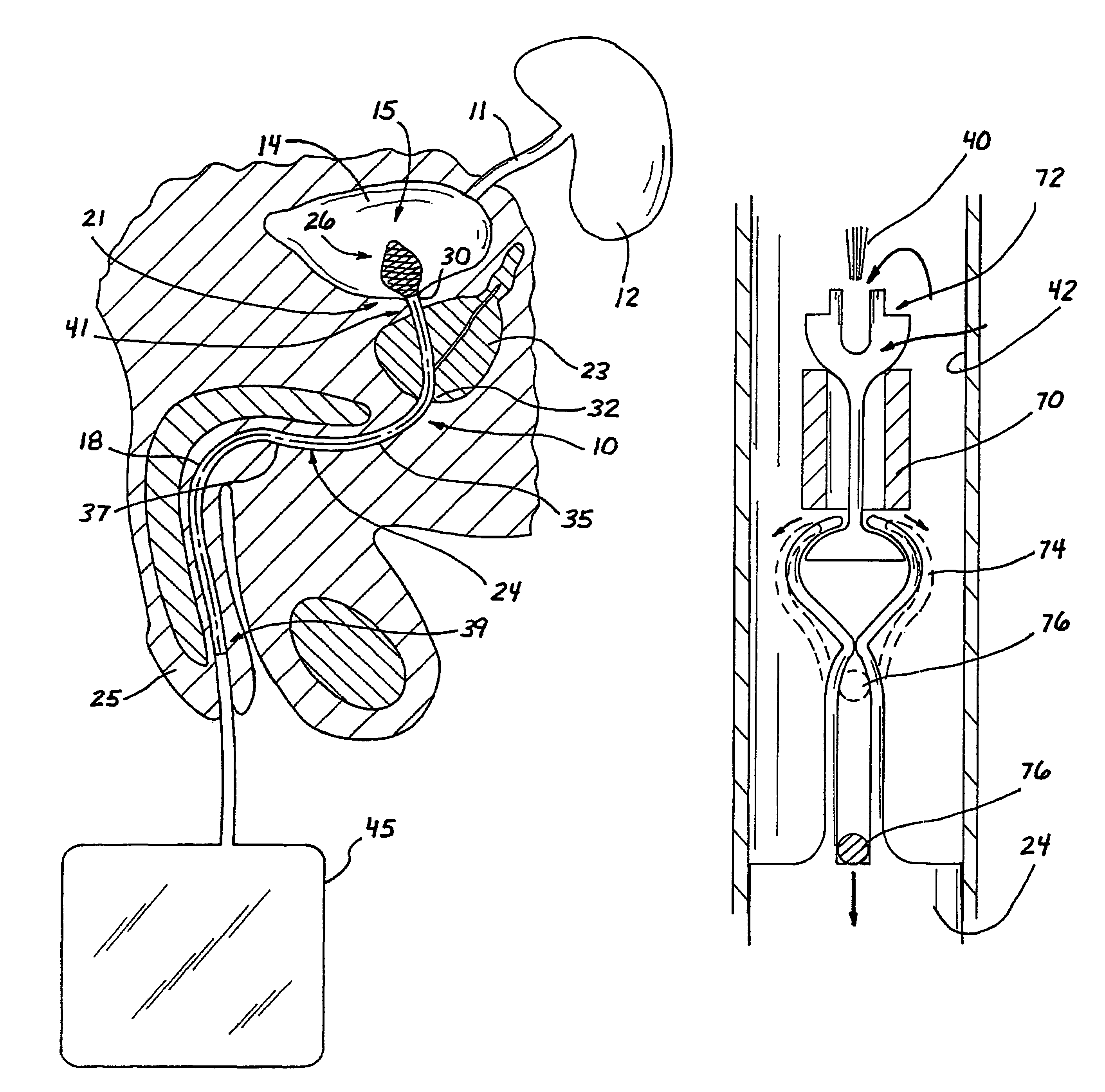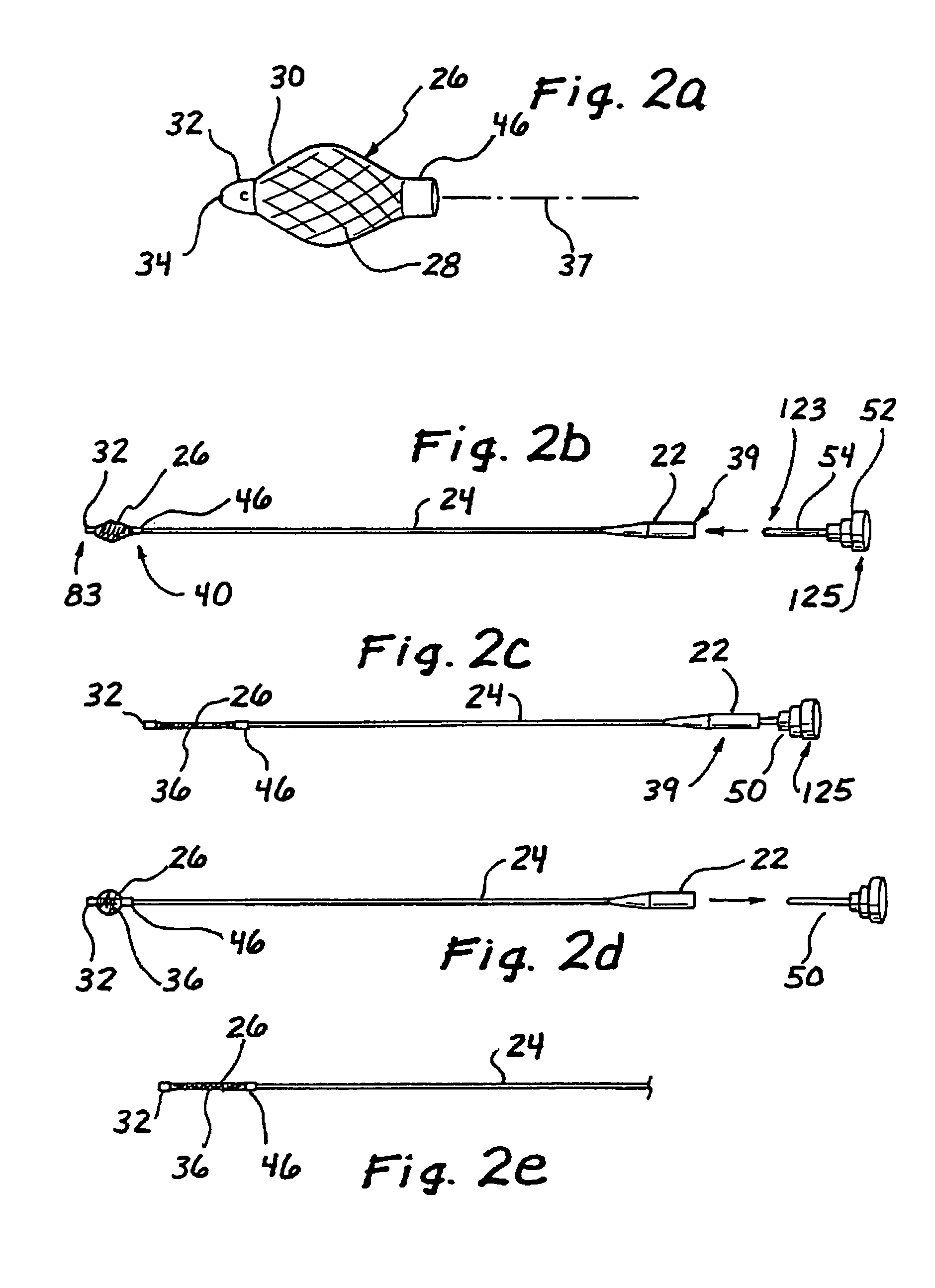Drainage catheter having an expandable retention member
a technology of expanding retention member and drainage catheter, which is applied in the field of drainage catheter, can solve the problems of patient discomfort due to the construction, the size of the catheter is difficult to insert, and the patient is uncomfortabl
- Summary
- Abstract
- Description
- Claims
- Application Information
AI Technical Summary
Benefits of technology
Problems solved by technology
Method used
Image
Examples
Embodiment Construction
[0016]Co-pending U.S. patent application Ser. No. 09 / 598,014 filed Jun. 20, 2000, entitled Drainage Catheter, is incorporated herein by reference.
[0017]Referring to FIG. 1, a drainage catheter 10 adapted for use in the urinary tract of a patient is illustrated. The urinary tract includes a ureter 11 extending in fluid communication between a kidney 12 and a bladder 14 having a bladder cavity 15. A urethra 18 begins at a bladder neck 21 and passes outwardly through a prostate 23 and a meatus 25 of a penis 27. When urethra 18 is compromised or obstructed, urine cannot naturally drain from bladder 14 and it becomes desirable to open urethra 18 or otherwise provide a fluid passage from bladder 14 through urethra 18 and meatus 25.
[0018]Catheter 10 includes an elongate tube 24 having a wall 35 extending distally to a retention member 26. Tube 24 extends along an axis 37 between a proximal end 39 and a distal end 41. Retention member 26 can be formed of a mesh. With catheter 10 operatively...
PUM
 Login to View More
Login to View More Abstract
Description
Claims
Application Information
 Login to View More
Login to View More - R&D
- Intellectual Property
- Life Sciences
- Materials
- Tech Scout
- Unparalleled Data Quality
- Higher Quality Content
- 60% Fewer Hallucinations
Browse by: Latest US Patents, China's latest patents, Technical Efficacy Thesaurus, Application Domain, Technology Topic, Popular Technical Reports.
© 2025 PatSnap. All rights reserved.Legal|Privacy policy|Modern Slavery Act Transparency Statement|Sitemap|About US| Contact US: help@patsnap.com



